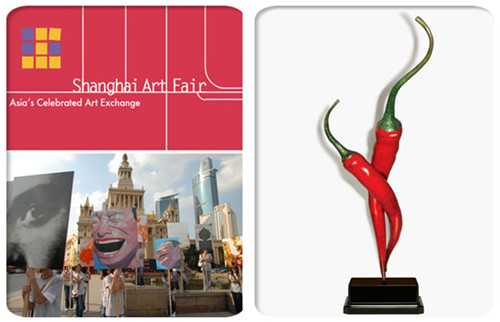Shanghai (CNS) -- The 2011 Shanghai Art Fair at the Shanghaimart closed on the afternoon of September 19.
Over 50,000 visitors came to this art fair, the largest in Asia, and contributed to the 130 million yuan worth of sales, a 60 million yuan leap compared to the last art fair.
In previous years, the most popular works were oil paintings and traditional Chinese paintings. This year's favorites covered a wide range of artwork, in particular home decoration collections.
The European Fine Art Fair (TEFAF) released a report in February, claiming that China has surpassed the U.K. as the second largest art market. Only a few months later, an authoritative American art market survey company raised China to the first place over the U.S.
Thirteen American galleries took part in the art fair in Shanghai and reaped in on sales. The sales from the R. Alexander Gallery alone exceeded 1 million yuan, leaving the American delegation a deep impression of the Shanghai art market's purchasing power.
Limited editions of Tango, the theme sculpture of the fair created by Singaporean female artist Kumari, were sold out in five days. Over 40 oil paintings by Wang Xiangming and printmaking works by Takashi Murakami were sold out in the first three days of the fair.
Exhibitors concluded that visitors were inclined to colorful and decorative artworks this year. More and more ordinary families are lighting up their rooms with moderately priced small oil paintings and small and middle sized sculptures.
Another trend was seen in the growing number of domestic art foundations and investment banks that have been engaged in public fairs with large-scale purchases of pieces.
According to an administrator of the Shanghai Art Fair, this phenomenon is a consequence of the governmental control over the real estate market and the high consumer price index (CPI).
The capital, which would have been invested in properties, was invested into the art market because of the attractiveness of such a high rate of return.
Experts have warned about the huge possibility of art market bubbles though. The art itself and appreciation of its beauty should always be the priorities when it comes to artwork consumption, rather than profit motives.



















